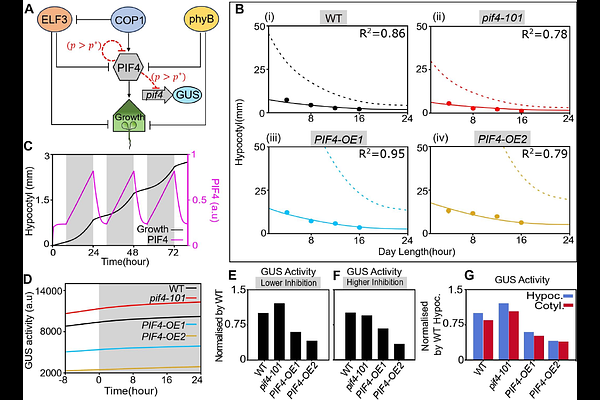Threshold-dependent negative autoregulation of PIF4 gene expression optimizes growth and fitness in Arabidopsis

Threshold-dependent negative autoregulation of PIF4 gene expression optimizes growth and fitness in Arabidopsis
Das, S.; Garhwal, V.; Mondal, K.; Das, D.; Gangappa, S. N.
AbstractPHYTOCHROME INTERACTING FACTOR 4 (PIF4) is a vital transcription factor that controls plant growth by integrating environmental signals like light and temperature. Though upstream regulators of PIF4 are known, transcriptional regulation of PIF4 is poorly understood. Here, we demonstrate that the PIF4 undergoes negative autoregulation. We show that PIF4 promoter activity is more in the pif4 mutant but significantly reduced in PIF4 overexpression transgenic lines. Moreover, CONSTITUTIVE PHOTOMORPHOGENIC 1 (COP1), which enhances PIF4 protein stability, promotes PIF4 autoinhibition. However, Phytochrome B (phyB), a photoreceptor that decreases PIF4 stability, inhibits autoinhibition. We further develop a network-based mathematical model incorporating the PIF4 autoinhibition and other key interactions. Our modeling and data analysis reveals that PIF4 autoregulation depends on a threshold of cellular PIF4 concentration. Our model also successfully predicts the hypocotyl growth and PIF4 promoter activity in various light and temperature conditions. Moreover, we show that the transgenic lines with enhanced PIF4 function negatively influence biomass and yield, irrespective of photoperiod and temperature. Together, the negative feedback of PIF4 dampens its own function and restraints unregulated growth. Our study thus elucidates the mechanisms of how the phyB-COP1/DET1-PIF4 module controls PIF4 transcription in tune with the endogenous PIF4 level.